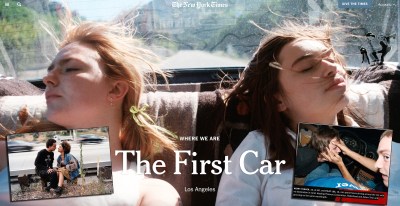Teenagers’ Cars Are the Gifts That Keep on Wreaking Havoc
The multiple-teenager-fatality car crash remains a sad staple of journalism. And no wonder. The instant loss of several lives is so dreadful and the death of a young person so poignant that the combination is shattering. When a car-full of teens crash and die, the article can almost be assembled by rote: the devastated families, the grieving community, the investigation that will forever be “ongoing,” and the seeming arbitrariness of young lives snuffed out in a few seconds.

Give the Times’ Ginia Bellafante credit for breaking the mold in her Sunday “Big City” column, in which she commented on the 3:30 a.m. crash a week ago in which a 17-year-old drove his 2012 Subaru Impreza into a stand of trees off the Southern State Parkway near Malverne, a half-dozen miles from Richmond Hill, Queens, where the five teens in the car lived.
Bellafante pulled no punches in pointing out that even before he crashed his new car, the driver, who was the lone survivor, was violating three provisions of his learner’s permit: must have licensed adult in the car, cannot have more than one passenger under 21, may not drive between 9 p.m. and 5 a.m. Even more admirably, she focused her column not on the community’s sense of loss but on the “almost obsessive” car culture in which the five teenagers came of age. Indeed, judging from her reporting, other Richmond Hill young people were more keen to talk up their wheels than reflect on the loss of life:
As Ian Ramdas, an acquaintance of some of the victims of Monday’s accident, explained it to me, he had been a car enthusiast since at least age 14. When he graduated from John Adams High School in Ozone Park two and a half years ago, his parents, both nurses, bought him an Infiniti G37. “My car from the factory, no bragging, is $53,000 after taxes,” he told me… “When you modify a car to your standards, you’re expressing yourself; it’s our art,” he said. “Some people invest $3,000 in a car. That’s what I paid for the rims. That’s what makes me different from everyone else.”
To underscore the quote, the Times editors juxtaposed a photo of Ramdas leaning against the trunk of his gleaming Infiniti outside the wake for one of the dead 18-year-olds, with a shot of the smashed Impreza in the woods. However, the article’s headline, “Gift, and a Tragedy, Born of a Car Culture,” pales beside the original (inferred from the URL), “Teenagers’ Cars Are the Gifts That Keep on Wreaking Havoc.”
Bellafante also went against the grain by invoking and linking to a prior crash that, like last week’s, altered or ended the lives of five Guyanese teenagers. In that December 2007 incident, a new Dodge Charger that had just been given to one of the teens was driven, apparently at high speed, into a guardrail on the Van Wyck Expressway. Two of the five were killed, and the other three were brought to Jamaica Hospital Medical Center in critical condition.
What happened, one wonders, to the three survivors? Five years on, are they physically or cognitively disabled? Do they drive? If they do, do they fetishize their cars like Ramdas and the other young people whom Bellafante interviewed? Did their schools and churches recruit them to warn against the reckless behavior that nearly killed them? Will they do so, now that another wreck has taken four more from their midst?
In departing from the standard teen-car-crash narrative, Bellafante’s column differs from the Times’ initial story, “4 Die in Crash at Notorious Turn on L.I. Road,” which largely blamed the “dead man’s curve” in the eight-lane highway for making the driver veer into the woods. Her column also stands in contrast to the paper’s depiction of the aftermath of another horrific multiple-teen fatal crash in our area — an August 2011 incident in which a 17-year-old driver and three passengers, all members of the Mainland High School football team in Linwood, NJ, were killed. The subsequent multi-part series described the commendable efforts to bind the team’s wounds but said next to nothing about the circumstances of the crash itself, which occurred on the Garden State Parkway on a Saturday morning in broad daylight.
No one has reported the Linwood vehicle’s speed, and it was missing from the New Jersey Police crash investigation report that I obtained last year. Nor was the speed reported for the 2007 Van Wyck Expressway crash. So it’s heartening that Nassau County District Attorney Kathleen Rice has contacted Subaru “to determine if the vehicle had a black box from which data about the vehicle’s speed can be downloaded,” according to CBS New York.
Disclosing and reporting the speeds in this and the other crashes won’t help the families. But the knowledge gained might help break the cycle of forgetfulness that makes future tragedies almost inevitable.

